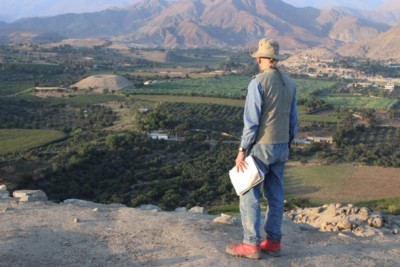A prehistoric pyramid in the shape of a volcanic cinder cone, Nepeña Vallery, Peru
Abstract

Archaeological work in the 1960s in the middle Nepeña Valley of coastal Peru (Figure 1) identified an artificial earthen mound or pyramid, approximately 15.5m high, with what was interpreted to be a crater dug into the top (Proulx 1968). This site has been variously known as Wanka, Huaca de Muro and El Bocón (PV31-55 in the Peruvian Ministry of Culture files). When viewed from a distance (Figure 2), the site resembles a volcanic cinder cone, such as the one in the Andahua Valley in southern Peru (Figure 3), and we have therefore named the site El Volcán. It should be noted, however, that there are no volcanoes in the vicinity of El Volcán to serve as models, nor indeed are any other examples of volcano-shaped structures known from Peru or elsewhere.
Authors
- Robert A. Benfer
Department of Anthropology, University of Missouri, Columbia, MO 65211, USA - Andrés Ocás
Asociación Nueva Amistad Mz. E, Lt 10, Los Olivos, Lima, Perú (Email: andresocas@gmail.com)

 Cite this article
Cite this article